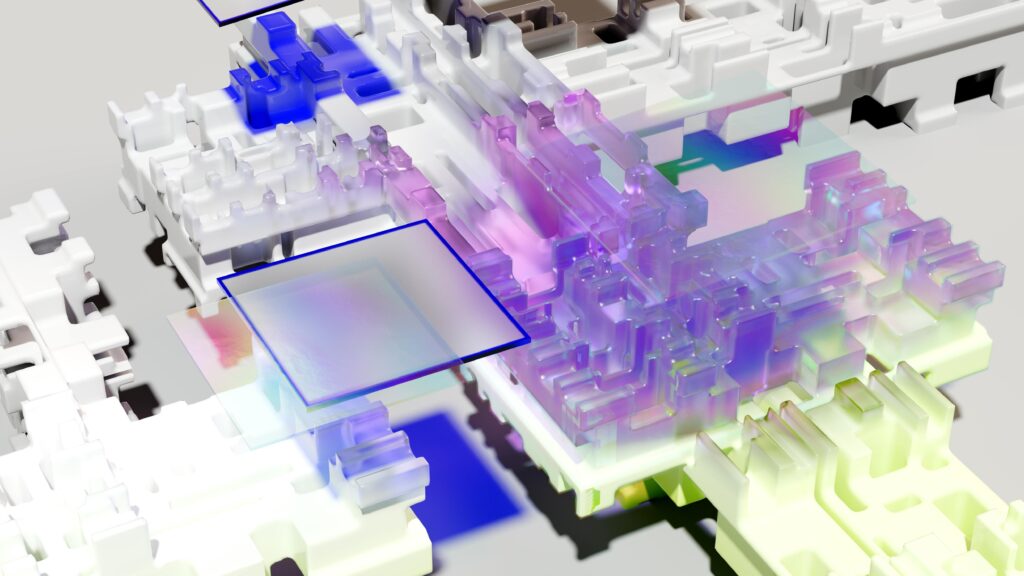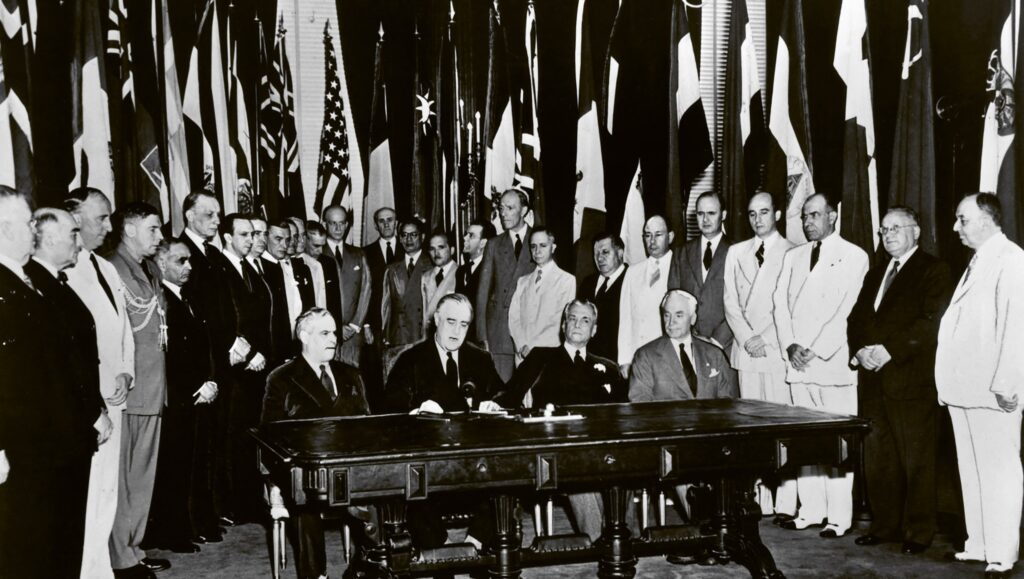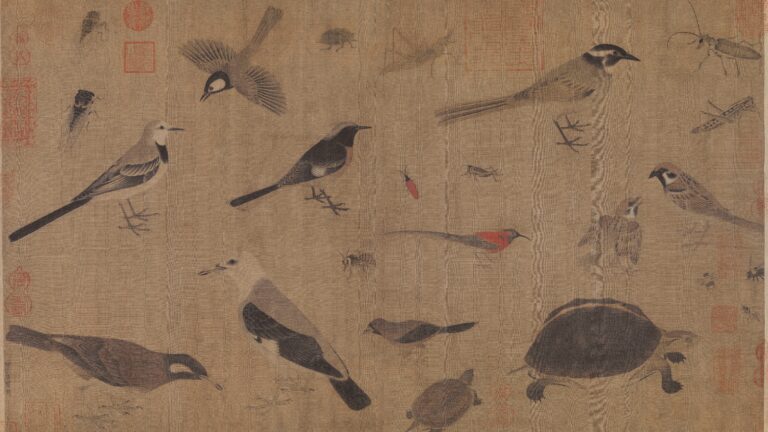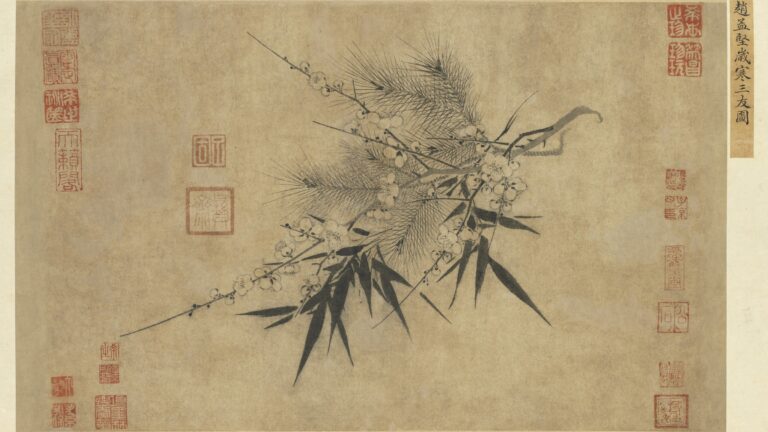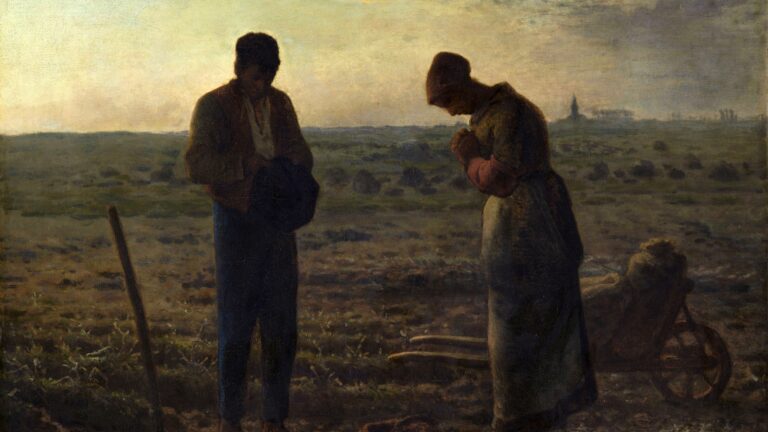This article was published in Vol. 2 No. 6 of the print edition.
1. Creativity, Innovation, and Technology
‘As explained by Arthur (2009), technology need not be material, it need not have a complex structure (though languages do), it need not be monolithic, it need not have been planned, it need not be a conscious invention […], it need not work perfectly and can be improved several times on different occasions, and it can be adapted to new uses. Technology […] is a means to fulfil a purpose: a device, or method, or process.’ (Salikoko Mufwene’s description of language as a ‘cultural technology’)1
Innovation is both a fundamental human activity, and a fundamentally human activity. It is fundamental, insofar as we are compelled by the need to innovate—a need that expresses itself in various ways. Whether we are combining and recombining concepts, words, or objects to create a new pattern that had never existed before, or are creating something entirely new ex nihilo, we as human beings have a compulsion to bring forth into the world that which we wish to see created. In practice, this can be as whimsical as a small boy crafting paper airplanes in his back garden, trying for no particular reason he can justify or defend to create something that will fly better than the version he set in flight before.
Furthermore, innovation is also fundamentally human—insofar as we, and we alone, have proven to be capable of innovating truly original creations of the kind that no other species of life on earth has shown itself capable of producing. In this sense, innovation is not only something that is a ‘part of us’ (a constituent component of human nature) but also something that is ‘ours’ (we innovate, and only we can innovate). It is therefore true to say that although we do indeed have a vestigial link to our primate cousins, with whom we share all of our basic instincts and unrefined biological impulses, we are irrevocably separated from the chimpanzee by both the impulse and the capacity to unleash a creative potential which is found in no other creature in the world. This spirit of creativity—what many Christians call the Holy Spirit, and what J. R. R. Tolkien referred to as the ‘Sacred Fire’ in his legendarium—is what leads us to innovate, and for that reason it may well be what makes us human.
The most conspicuous output of innovation is found in the technology our species has produced. From life-giving medicines to vehicular transportation and air-conditioned housing, there is almost no aspect of modern life untouched by technology. What all technological innovations share is that they have one or both of the following properties: they enable the wielder to perform an existing task with greater efficiency, or to perform a task not previously possible. Historian of science John R. Watt wrote about air conditioning in relation to these properties; not only did the advent of AC increase labour productivity in factories and offices by providing workers with stable temperatures year-round, it also enabled the human settlement of inhospitable desert regions in the American Southwest, allowing towns and cities to emerge where none had existed before.2 Despite being taken for granted by most of us, air conditioning can be praised as a truly successful technological innovation; it increases efficiency, enables new possibilities, and has been adopted by billions across the globe.
These two core properties of technological innovations help to explain why they have always been appealing and influential to anyone looking for a competitive edge. In the context of war, the application of technology to this end has always been understood. Military historians Crawford and Mitiukov observe that ‘When analysing ancient and medieval data, it is easy to notice that progress in technological areas, especially in military technology, could give the possessors of these innovations a decisive advantage over other nations, contribute to the conquest and exploration of other territories, and insure a certain domestic tranquillity.’3 This helps to explain why technologies that appear innocuous at their inception, such as the airplane, are so rapidly and reliably retooled into weapons of war that can kill more ruthlessly and in new ways. To paraphrase war historian of military technology Emily Goldman: ‘national survival depends upon success in the battlefield, and success in the battlefield depends upon technology’.4
But tangible technologies, made out of physical materials that can be handled and wielded, are not the only kind of technology that can be described. According to Cultural Evolution Theory, a scientific framework that utilizes Darwinian theory, mathematics, and evolutionary biology to understand processes of sociocultural change and transformation, technological innovations can be entirely immaterial; they can exist purely in the social and ideational domain.5 To understand this concept, we can look to Exeter University Professor of Cultural Evolution Alex Mesoudi, who defines technology as ‘goal-oriented shared knowledge together with its external means. It is thus knowledge geared to, and organized around, solving specific problems faced by a group or society.’6 In this understanding, we can include not only airplanes, automobiles, and the semiconductor under the rubric of technology, but also immaterial innovations such as freedom of speech, the rule of law, and the testudo formation of the Roman military.
Although many might think of these as mere abstract ideas, their applications and results are very much the same as any physical technological innovation one might think of. The testudo was never more than a concept in the minds of Roman soldiers, but applying that idea conferred on them an advantage that brought victory against overwhelming odds. Freedom of speech was never more than a principle, but societies that upheld this freedom were able to achieve new heights of creativity and innovativeness. Taking these ‘cultural technologies’ in conjunction with the ‘material technologies’ covered previously allows us to conceive of technology as a bifurcated phenomenon; some technologies are cultural, others material, but both exhibit the same properties: enhancement, enablement, or both.7

2. Perezian Techno-Economic Paradigms
‘That is the structure of scientific revolutions: normal science with a paradigm and a dedication to solving puzzles; followed by serious anomalies, which lead to a crisis; and finally resolution of the crisis by a new paradigm.’ (Thomas Kuhn, The Structure of Scientific Revolutions)8
| Techno- economic paradigm | Popular name for the period | Core country or countries | Big-bang initiating the revolution | Year |
| FIRST | The ‘Industrial Revolution’ | Britain | Arkwright’s mill opens in Cromford | 1771 |
| SECOND | Age of Steam and Railways | Britain (then Continent, then USA) | Test of the ‘Rocket’ steam engine for the Liverpool- Manchester Railway | 1829 |
| THIRD | Age of Steel, Electricity and Heavy Engineering | USA and Germany forging ahead and overtaking Britain | The Carnegie Bessemer steel plant opens in Pittsburgh, Pennsylvania | 1875 |
| FOURTH | Age of Oil, the Automobile, and Mass Production | USA (with Germany at first vying for world leadership), later spreading to Europe | First Model-T comes out of the Ford plant in Detroit, Michigan | 1908 |
| FIFTH | Age of Information and Telecommunications | USA (spreading to Europe and Asia) | The Intel microprocessor is announced in Santa Clara, California | 1971 |
The conceptual framework of technological innovations advanced by social evolution theorists is essentially synonymous with that of philosopher of technology Carlota Perez, whose 2003 book Technological Revolutions and Financial Capital defines material and cultural technologies as ‘hard tools’ and ‘soft or ideological tools’.9 Perez, a disciple of philosopher of science Thomas Kuhn10 as well as economist Joseph Schumpeter (to whom we will return later),11 is most famous for elaborating a sophisticated theoretical framework describing the ‘techno-economic paradigms’ that characterize societies at given moments in their historical development.12 In Technological Revolutions, she describes the five successive techno-economic paradigms that have emerged over the last 250 years (Table 1).
Each paradigm constitutes a complex suite of both material and cultural technologies that define the ‘common sense’ and ‘logic’ of a period, as well as the frontier of its capabilities for production and technological complexity.13 The paradigm of the Industrial Revolution comprised clusters of material technologies, like the spinning jenny and the power loom, as well as cultural technologies like the factory system and the division of labour as described by Adam Smith.14 As these clusters of innovation are increasingly adopted, they come to define the paradigm of the era—but Perez emphasizes that they should not be seen as static. Within any given paradigm, development in cultural and material technology continues at an incremental pace, bringing modest but cumulative benefits to societal adopters. It is only many years after new groundbreaking innovations are embraced on a wide scale that the old paradigm becomes obsolete and societies begin their transition to the next one. The movement of a society or civilization from one paradigm to its successor is described by Perez as a ‘technological revolution’. These revolutions are unlike their political counterparts in that they do not take place over a single day, or even a year. Rather, they are a process that begins with the diffusion of radical innovations which confer such profound advantages as to make the old ways obsolete, and ends when these innovations become entrenched into a new and stable technological equilibrium accompanied by ‘an adequate socio-institutional framework’ capable of supporting it.15 This process, Perez warns, is inevitably ‘complex, protracted and socially painful’.16
Perhaps the best-known example can be found in the Industrial Revolution, which in Perezian terms encompasses not only a distinct techno-economic paradigm, but also the technological revolution associated with its emergence. At the moment of its inception, the full extent of the changes yet to come from this seismic shift in technology would have been unknowable even to its most enthusiastic adopters, but those changes (which would ultimately define the modern world) were often as destructive as they were beneficial.
For one, the Industrial Revolution both enabled and was accompanied by population explosions that transformed the societies of its earliest adopters. In France, the population grew by 31 per cent between 1800 and 1850, in Germany by 61 per cent between 1816 and 1864, and in Britain, by a stunning 92 per cent between 1800 and 1840.17 The severe demographic pressure of the industrial population boom was further exacerbated by another feature of the Industrial Revolution—namely the unprecedented rise of urbanization, prompted by the relocation of labour from rural and agricultural locales into industrialized cities where factory work could be found. This demographic shock, in conjunction with the massive increase in wealth generation enabled by more productive factory machines and the division of labour, led to staggering levels of economic inequality (an effect that was particularly pronounced in urban areas) and unprecedented levels of popular immiseration.18 At the same time, the sudden enrichment of speculators, financiers, and capitalists of non-aristocratic backgrounds had dramatic implications for the internal balance of power within industrialized nations, allowing private interests to influence and even supplant state authorities.19 Societies affected in this way by the Industrial Revolution, such as France, Hungary, Japan, Russia, Greece, Belgium, and others also saw literal revolutions, focused on cities and urban centres where the impact of the new paradigm was most severe.20 Not to mention the host of other consequences that followed the industrial techno-economic paradigm, in which rivers were toxified, food supply chains contaminated, and breathable air became polluted by soot and coal dust. Such consequences of the Industrial Revolution as a paradigm serve as a reminder even now that although technological progress may be beneficial and desirable, it invariably comes at a cost in the form of negative externalities, which are often unperceived at the time and may remain unseen decades after exuding pernicious effects on adopter societies.
3. Generative AI Models and Stable Diffusion
‘Financialcapitalreignsarrogantandproduction capital has no alternative but to adapt to the new rules; some agents with glee, others with horror.’ (Carlota Perez on the disruptive nature of technological revolutions)21
What Carlota Perez, having published her magnum opus in 2002, could not have foreseen is something very few thinkers are taking seriously even today: namely, the dawn of true computational creativity in the form of deep learning and neural network models, the ever-growing sophistication and potential of which shows all the signs of heralding a new age in our techno-economic development. But before proceeding further in this line of thought, it is helpful to establish formal definitions for the terms and concepts under scrutiny. Machine learning, neural networks, and deep learning are all terms that refer to both a distinct computational method, as well as to artificial intelligence models that operate upon the basis of those methods. According to IBM, all three of these can be considered subfields of artificial intelligence (AI), which is the terminology we will use for the remainder of this essay.22
‘Innovation is both a fundamental human activity, and a fundamentally human activity’
It is important to remember that AI models of this kind are nothing new. The theoretical basis behind modern computational neural networks was laid out as far back as the 1800s, when early neuroscientists and psychologists such as William James began to theorize about the nature of the human ability to compute complex outputs from the intercommunication of neurons within the brain.23 Artificial neural networks became radically more sophisticated in the second half of the twentieth century, and their application in commercial and business contexts became pronounced in the early 2000s. Therefore, what is genuinely new in this potential ‘AI-fuelled technological revolution’ cannot be located in any groundbreaking concepts or mathematical models, but rather in the groundbreaking application of established techniques to perform a task that was previously thought to be impossible for machines: artistic creativity.
One of the most popular and impressive examples of this novel technology can be found in Stable Diffusion (or SD, for short); a deep learning, text-to-image model released by the for-profit start-up company StabilityAI in 2022.24 The tool has been described by British software engineer Simon Willison as a member of the broad genre of ‘[m]achine learning generative models,’ but as not all tools of this genre are true machine learning models, we will refer to them as generative AI models or GAIM for short.25 Since making its debut to the public free of charge in September 2022, Stable Diffusion has become widely recognized as the most sophisticated and advanced GAIM in existence (at least among those whose existence is known to the public) in large part because of its exceptional ease of use. Upon downloading and starting up the tool (or alternatively, upon using the API via the StabilityAI website), users can insert an arbitrary number of textual input prompts to define the criteria for the image they wish to generate, and thereafter can generate a theoretically infinite quantity of images at the click of a button. As image generation is entirely dependent upon the textual prompts inserted by users, the quality and believability of Stable Diffusion images can vary wildly. Nevertheless, the tool has succeeded where its predecessors failed, as it not only produces images that are indistinguishable in quality and sophistication from what a talented human artist might create, but also those that actually surpass them.
Stable Diffusion is still in the early stages of development, and has only been released to the public for a matter of months, but there are already signs of fundamental, irreversible change emerging in relation to the tool and those like it. Midjourney, another GAIM released in July 2022 that is similar to Stable Diffusion but does not have the radical free access and open source freedoms that the latter provides, has already been used to win first place and a cash prize in a fine art competition hosted in August. As observed by The Washington Post, there was a great deal of controversy when the facts became known, especially as the ‘artist’ Jason Allen did not disclose to the Colorado State Fair judges that his submission was produced by an AI, rather than by his own hand.26 With Stable Diffusion, any metadata associated with the creation of the image can later be scrubbed, edited out, and removed. Because the tool has already been released to the public, and cannot be retrieved even if its parent company were to remove public access, it is now literally impossible for us to ever know whether a piece of art we see online was created by a human, or by an AI. As Simon Willison has stated: ‘One possibility is that nobody can trust anything ever again.’27

This observation makes Stable Diffusion the most powerful tool ever created in the world of deepfakes—artificial renderings of audio, images, or videos to create a false simulacrum of reality. Stable Diffusion knows how to draw a Star Destroyer from StarWars, a sandworm from Dune, and every animal or plant you could possibly think of. It knows every major figure in the history of art, and it knows how to draw like them. Using Stable Diffusion, one could generate an image and convincingly pass it off as a ‘lost Van Gogh painting’ that had never even existed—no one would be any the wiser. Although its generative potential is currently confined to art, Stable Diffusion constitutes a successful ‘proof-of-concept’ for GAIM-creativity, and it is therefore likely only a matter of time before the principles behind its success are applied to create new tools in other mediums, like photorealistic imagery or music.
The implications of this for art, as a principle field of human creativity and innovation, are no less radical than its implications for distorting reality. With the ability to generate a masterpiece by typing in a few textual prompts and clicking ‘generate’, the incentives for people to pursue careers in art are fundamentally diminished. With the ability to delegate the basic principles of good art like proportionality or symmetry to a machine, the need for people to study and understand those principles is similarly decreased. ‘Steve’, a freelance digital artist I spoke to, whose entire income is made up of commissions he receives for his artwork, told me that he did not expect the digital art industry, or even his own occupation, to be the same by the end of the year: ‘It’s infinitely faster and cheaper to generate an image and tweak it with an editor until it’s at the point of being near to perfection, than it would be to take the time to create that image from scratch. Digital artists like myself may completely disappear as an occupation; we’ll either go out of business or move to lower-paid roles as digital image editors instead.’
‘Stable Diffusion [is] the most powerful tool ever created in the world of deepfakes […] to create a false simulacrum of reality’
What Stable Diffusion is doing to art as an entire field of human creativity is a quintessential case of Schumpeter’s ‘creative destruction’.28 This term was first coined by German thinker Werner Sombart in his Krieg und Kapitalismus, but has come to be associated with Joseph Schumpeter, the Austrian political economist best known for his theoretical framework on the nature of business cycles. Business cycles are exceedingly hard to identify without the benefit of hindsight, as they are nothing more than ostensibly discrete epochs, assigned with some arbitrariness to moments within the continuous sine wave that is the economy as a whole.29 Schumpeter’s realization regarding these cycles was twofold. First, he saw that the ‘upswing’ on the sinusoid of the business cycle was primarily caused by technological innovations (both cultural and material in kind). Second, he realized that the process by which these innovations are introduced and adopted is profoundly destructive in nature; as new ways of doing things are created, old ways become obsolete and perish, swept away by the whimsical winds of history. Creative destruction, therefore, is summarized by Schumpeter as ‘the process of industrial mutation […] that incessantly revolutionizes the economic structure from within, incessantly destroying the old one, incessantly creating a new one’.30
Were Schumpeter alive today, he would undoubtedly see in Stable Diffusion (and by extension in the rising prominence of GAIMs in the broader sense) the principles of creative destruction at work. The tool’s creative potential seems nearly limitless; given the conditions of stable internet access, all 7.5 billion people on the planet can unleash their ‘creativity’ with nothing more than textual prompts to generate artistic imagery of incredible beauty. At the same time, there is the destructive potential; digital art, and digital artistry as a distinct occupational category, may well cease to exist before long. There is a non-consensual aspect to this destruction, in how Stable Diffusion itself was created; the developers were only able to accomplish their mammoth task by training the model on no less than 2.3 billion images, none of which were acquired with the explicit consent of their creators. StabilityAI prefer not to get into the question of copyright and ownership, and their website FAQ waves these issues away by cryptically saying: ‘The area of AI-generated images and copyright is complex and will vary from jurisdiction to jurisdiction.’31 The business model of StabilityAI as a corporate entity remains obscure, and its description as per the FAQ section of the company’s own website appears intentionally vague and ambiguous.32 Yet there are rumours that the market valuation of its parent company, StabilityAI, could soon shoot up to 1 billion USD by the end of 2022, despite releasing an open-source product without a price tag, and threatening more jobs than it seems likely to create (at least in the short term).33
What this all points to is the first spark of an upcoming Perezian technological revolution. By pinpointing the first of her five paradigms back to 1771, Perez has neatly divided the last 250 years into five epochs, averaging out at fifty years each. The most recent of the five, the Age of Information and Telecommunications, started in 1971, making it past its due date for renewal. With the proof of potential for actual creative work to be outsourced to GAIMs, and, with that, at least one tool of immense power (Stable Diffusion) now free-floating in our cultural and economic ecosystems, it is plausible that we could be witnessing the dawn of a new techno-economic paradigm.
| Techno- economic paradigm | Popular name for the period | Core country or countries | Big-bang initiating the revolution | Year |
| SIXTH | The ‘AI-Creative Revolution’ | Nowhere—the paradigm originates and diffuses entirely through digital space | Stable Diffusion is released as a free, open source model which can be downloaded and modified by the public | 2022 |
What this paradigm could be called years from now can only be speculated on; perhaps something akin to the ‘AI-Creative Revolution’ could become the nomenclature that future generations will use. Whatever the case, it would mark the first time in the history of humanity where an innovation of our own making has superseded us in something so fundamental as our ability to express our creative potential: first through art, then likely through jokes, stories, and news articles, then perhaps through music and video, and by that point, we would no longer be able to deny our inadvertent arrival upon a genuine Brave New World.
While the dawn of a new age is usually a sign for optimism, the future that we are presented with by Stable Diffusion and GAIMs is far more ambiguous. These models, after all, can never create something from nothing; they are always dependent upon human inputs, in the form of training data. A feral child that is abandoned on a desert island as a baby, and grows up deprived of any interaction with humans or civilization, could and likely would, when sitting down on the soft sand of the beach, draw circles, lines, and shapes in it with a stick, perhaps finding the activity intrinsically pleasing. It would be primitive, certainly, but this would be art; true art, coming from Tolkien’s ‘Sacred Fire’—the human spirit that drives us towards generativity. Stable Diffusion does not, and cannot have that spirit; it is a GAIM, not a human with a soul. Therefore it could never generate a drawing on a beach unless it had already been trained on images of those drawings—thousands of them—produced by human hands. These models can never create something from nothing, and will become stagnant over time if they are not continuously updated by newer, more relevant inputs.
Indeed, one may predict that, since the incentive structure created by GAIMs discourages ‘true’ human creativity in the field where such tools are used, there will inevitably come a time in which we will experience a shortage of human inputs for these AIs to be trained with, in subsequent stages of development.
For this reason, we may also surmise that in such a paradigm, the models will eventually decay into stagnation. Gradually, as human creative output diminishes and we become more reliant upon GAIMs, the stagnancy of these models will have only one solution—we update the models with inputs produced by the models themselves. This, in other words, leaves us with the eerie possibility of entering a paradigm in which originality and creativity die off, and we are locked into the use of these stagnant, soulless machines; content generating models that eventually become trained entirely on inputs produced by other content generating models. It would be the end of innovation as we know it, and regardless of who or what ‘generates’ the obituary for innovation, one may be assured of what it will read: ‘Death by suicide.’
NOTES
1 S. Mufwene, ‘Language as Technology: Some Questions that Evolutionary Linguistics Should Address’, in T. Lohndal, ed., In Search of Universal Grammar: From Old Norse to Zoque (John Benjamins Publishing Company, 2013), 327–358.
2 J. R. Watt, ‘History of Evaporative Cooling’, in Evaporative Air Conditioning Handbook (Boston, MA: Springer, 1986), https://doi.org/10.1007/978-1-4613- 2259-7_2.
3 Kent R. Crawford and Nicholas W. Mitiukov, ‘The British–Italian Performance in the Mediterranean from the Artillery Perspective’, in L. E. Grinin and A. V. Korotayev, eds, History & Mathematics: Trends and Cycles (Volgograd: ‘Uchitel’ Publishing House, 2014), 300–313.
4 Emily O. Goldman, ‘The Spread of Western Military Models to Ottoman Turkey and Meiji Japan’, in T. Farrell and T. Tariff, eds, The Sources of Military Change: Culture, Politics, Technology (Boulder, CO: Lyne Rienne Publishers, 2002), 41–67.
5 Alex Mesoudi, ‘Cultural Evolution: A Review of Theory, Findings and Controversies’, Evol Biol, 43 (2016), 481–497, https://doi.org/10.1007/s11692-015-9320-0.
6 Alex Mesoudi et al., ‘The Cultural Evolution of Technology and Science’, in P. J. Richerson and M. H. Christiansen, eds, Cultural Evolution: Society, Technology, Language, and Religion (MIT Press, 2015), 193–216.
7 P. Turchin, T. E. Currie, E. A. L. Turner, and S. Gavrilets, ‘War, Space, and the Evolution of Old World Complex Societies’, Proceedings of the National Academy of Sciences of the United States of America, 110/41 (2013), 16384–16389, https://doi.org/10.1073/pnas.1308825110.
8 T. S. Kuhn, The Structure of Scientific Revolutions (third ed., University of Chicago Press, 1996).
9 Carlota Perez, Technological Revolutions and Financial Capital: The Dynamics of Bubbles and Golden Ages (Cheltenham: Edward Elgar, 2002), 8.
10 Kuhn, The Structure of Scientific Revolutions.
11 J. A. Schumpeter, Business Cycles: A Theoretical, Historical and Statistical Analysis of the Capitalist Process, abridged with an Introduction by R. Fels (Philadelphia: Porcupine Press, 1939).
12 Perez, Technological Revolutions and Financial Capital.
13 Nexxworks Innovation Talks (May 2020), Technological revolutions, transition periods and golden ages—a conversation with Carlota Perez, https://open.spotify.com/episode/3OheIcF3jjKO7VH1x97rr7.
14 Peter Turchin and Sergey A. Nefedov, Secular Cycles (Princeton, NJ: Princeton University Press, 2009).
15 Perez, Technological Revolutions and Financial Capital, xviii.
16 Perez, Technological Revolutions and Financial Capital, xviii.
17 D. Davis and K. C. Feeney, ‘Explaining British Political Stability after 1832’, Cliodynamics: The Journal of Quantitative History and Cultural Evolution, 8/2 (2017), https://doi.org/10.21237/C7CLIO8237530.
18 Davis and Feeney, ‘Explaining British Political Stability after 1832’.
19 G. Bertocchi, ‘The Law of Primogeniture and the Transition from Landed Aristocracy to Industrial Democracy’, Journal of Economic Growth, 11/1 (2006), 43–70, https://doi.org/10.1007/s10887-006-7405-4.
20 J. A. Goldstone, Revolution and Rebellion in the Early Modern World: Population Change and State Breakdown in England, France, Turkey, and China, 1600–1850 (25th Anniversary Edition, Routledge, 2016), 646.
21 Perez, Technological Revolutions and Financial Capital.
22 IBM, ‘AI vs. Machine Learning vs. Deep Learning vs. Neural Networks: What’s the Difference?’, ibm.com (27 May 2020), www.ibm.com/cloud/blog/ai-vs-machine-learning-vs-deep-learning-vs-neural-networks.
23 William James, The Principles of Psychology, Vol. 1 (Henry Holt and Co., 1890), https://doi.org/10.1037/10538-000.
24 StabilityAI, ‘Stable Diffusion Public Release’, https://stability.ai/blog/stable-diffusion-public-release, accessed 16 October 2022.
25 Simon Willison, ‘Stable Diffusion Is a Really Big Deal’, simonwillison.net (29 August 2022), https://simonwillison.net/2022/Aug/29/stable-diffusion/.
26 ‘He Used AI to Win a Fine-arts Competition. Was It Cheating?’, The Washington Post (9 September 2022), www.washingtonpost.com/technology/2022/09/02/midjourney-artificial-intelligence-state-fair-colorado/.
27 ‘Stable Diffusion Breaks the Internet’, The Changelog Podcast, Episode 506.
28 Schumpeter, Business Cycles.
29 D. S. G. Pollock, ‘Investigating Economic Trends and Cycles’, in T. C. Mills and K. Patterson, eds, Palgrave Handbook of Econometrics (London: Palgrave Macmillan, 2009), https://doi.org/10.1057/9780230244405_6.
30 J. A. Schumpeter, Capitalism, Socialism and Democracy (London: Routledge, 1994 [1942]), 82–83.
31 StabilityAI, ‘FAQ’, https://stability.ai/faq, accessed 16 October 2022.
32 StabilityAI, ‘FAQ’, https://stability.ai/faq, accessed 16 October 2022.
33 ‘Startup Behind AI Image Generator Stable Diffusion Is in Talks to Raise at a Valuation up to $1 Billion’, Forbes (7 September 2022), www.forbes.com/sites/kenrickcai/2022/09/07/stability-ai-funding-round-1-billion-valuation-stable-diffusion-text-to-image/?sh=51dc9f5f24d6.
Related articles:


